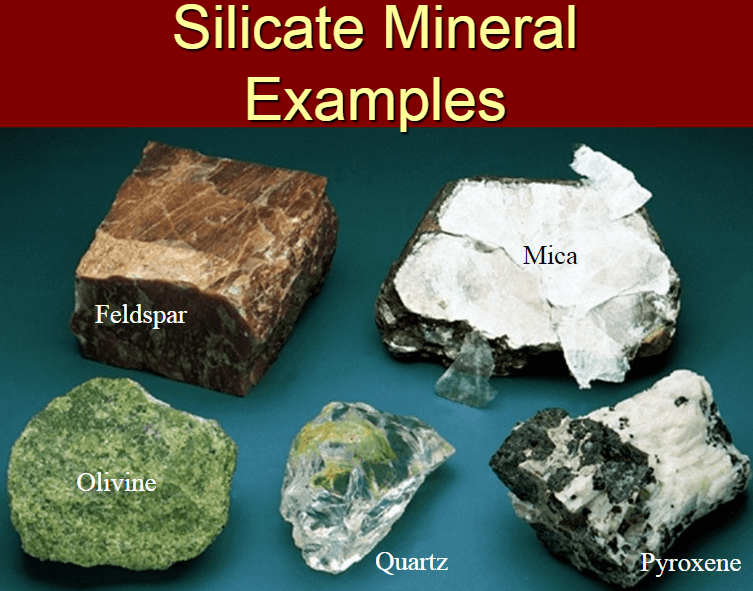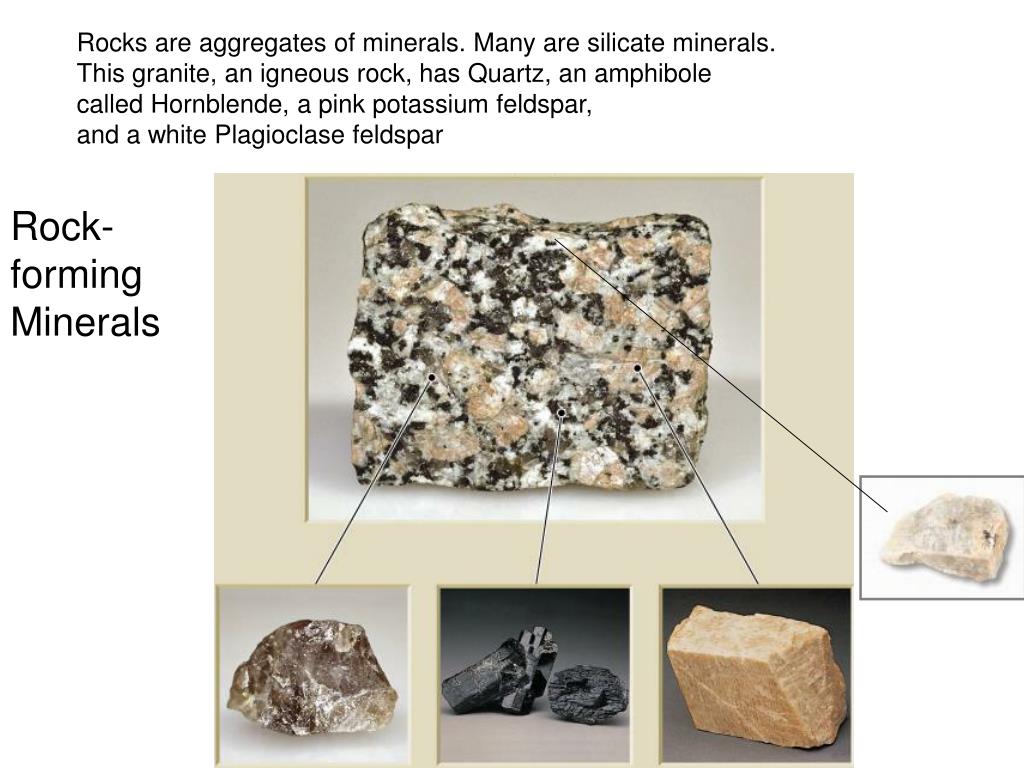Silicate minerals identification you will be given examples of each of the rock forming silicates mentioned on page 1.
What 3 major silicate minerals can be found in granite.
1 precipitation directly from an aqueous water solution with a temperature change 2 crystallization from a magma with a temperature change and 3 biological precipitation by the action of organisms.
3 2 formation of minerals.
Double chain silicates called amphiboles host a wider variety of cations including fe 2 mg 2 ca 2 al 3 and na and have a wide variety of colors.
3 2 1 precipitation from aqueous solution.
Silicate minerals are rock forming minerals made up of silicate groups.
The minor essential minerals of granite may include muscovite biotite amphibole or pyroxene.
Among the principal rock forming minerals micas are found in all three major rock varieties igneous sedimentary and metamorphic.
It is a type of phyllosilicate exhibiting a two dimensional sheet or layer structure.
Is granite a metallic mineral or non metallic.
Note that there may be more than one variety of the same mineral name.
On earth a wide variety of silicate minerals.
Which element combines with silicon to form the tetrahedral unit of structure of the silicate minerals.
Minerals form when atoms bond together in a crystalline arrangement.
They are present in granite in differing amounts so all granite doesn t look the same.
Hard soft and medium are the three primary classes.
Contact metamorphism changed sandstone and shale into.
Which mineral can be found in granite andesite gneiss and hornfels.
D the number of cleavage directions present.
Mica any of a group of hydrous potassium aluminum silicate minerals.
Three main ways this occurs in nature are.
Minerals are grouped into mineral classes primarily on a basis of a chemistry specifically the cations within the chemical formula.
The most common amphibole is hornblende a black mineral found in igneous rocks like granite and andesite see figures 4b and 4c.
Potassium feldspar k spar endmember k al si 3 o 8 albite endmember na alsi 3 o 8 anorthite endmember ca al 2 si 2 o 8.
Three minerals found in granite are quartz feldspar and mica.
In the following table record the physical properties of each unknown and use the mineral identification tables to identify the specimens.
Silica is found in nature as the mineral quartz and its polymorphs.
They are the largest and most important class of minerals and make up approximately 90 percent of the earth s crust.
Rocks containing less than 20 percent quartz are almost never named granite and rocks containing more than 20 percent by volume of dark or ferromagnesian minerals are also seldom called granite.
Which minerals are found in the igneous rocks gabbro and basalt.










